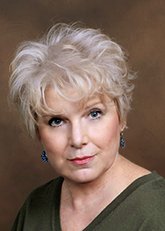Note: This article originally appeared in Issue 40:2 (Nov/Dec 2016) of Fanfare Magazine.
SONGS OF THE HOLOCAUST • Rachel Joselson (sop); Réne Lecuona (pn) • ALBANY 1627 (75:15 )
ADOLF STRAUSS Ich weiss bestimmt, ich werd dich wiedersehn. ULLMANN 3 jiddische Lieder. TAUBE Ein jüdisches Kind. ILSE WEBER 8 Lieder. KLEIN Ukolébavka. JAMES SIMON 3 Lieder aus der Chinesischen Flöte. GLANZBERG 12 Holocaust Lieder.

There have been many song recital discs commemorating the Holocaust. This is one of the finest, both for its imaginative variety of repertoire and for the passion of its performances. Adolf Strauss’s song is a lightweight, upbeat chronicle, optimistic that long separated lovers will eventually be united. Viktor Ullmann’s Three Yiddish Lieder are weighty, classical songs, belying their simple poems. Carlos Taube’s A Jewish Child is a mournful ditty, its melodramatic character emphasized by a solo violin (played by Scott Conklin). Ilse Weber was a poet and writer of children’s books. Not a professional musician, she wrote simple melodies for her eight poems of Terezín, mostly about children. Gideon Klein’s Lullaby is his arrangement of an old Hebrew song. James Simon set three songs of Li-Tai-Po.
Norbert Glanzberg (1910–2001) was the only one of these composers to survive the Holocaust. He fled to Paris in 1933 and got through the war hiding in unoccupied France. A major song composer, he wrote hits for Edith Piaf and for Yves Montand, later for Petula Clark and Mireille Matthieu. His 12 Holocaust Lieder were composed in 1983, to poems by death-camp inmates. This is a magnificent song cycle: eloquent, lyrical, dramatic. The booklet says “Glanzberg’s songs evoke the late-Romantic style of the lieder of Schumann and Brahms.” And, I would add, their quality. I have seldom been so bowled over by previously unheard songs. One of them adds a solo cello, played by Hannah Holman.
Rachel Joselson is a distinguished artist and teacher who has sung solo roles in opera houses the world over, including the Met. She is closely attuned to all of these songs, singing with a clean, strong soprano; Réne Lecuona contributes bright, vibrant pianism, almost as enchanting as that of her famous namesake. The recorded sound is exemplary. English translations follow the original (German or Yiddish) text of each song, rather than being side-by-side, which is a slight inconvenience, occasionally requiring flipping back and forth between pages. With that quibble, passionately recommended.
James H. North